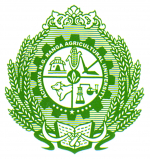CGIAR Research Program on Grain Legumes and Dryland Cereals - GLDC
Overview: FP3-1.52 - Feminisation of agriculture in India - what interventions can relieve the burden of women
Leader:
PAdmaja Ravula, International Crops Research Institute for the Semi-Arid Tropics - ICRISAT
Coleader: Swamikannu Nedumaran, International Crops Research Institute for the Semi-Arid Tropics - ICRISAT
Team
members: 5
Partner
organizations: 2
Budget 2025
USD :
0
Outputs: 1
Activity/Product Description
In the semi-arid tropics (SAT), women supply most of the farm labor and perform highly labor-intensive tasks, such as weeding, threshing, shelling or transport of inputs and agricultural commodities to and from the farm by head-loading. The labor productivity of many women smallholders is constrained by lack of access to labor-saving technologies and the most basic of farm tools. Poorer smallholders face a poverty trap, due to low agricultural and labor productivity, from which they cannot easily escape without access to key resources such as rural energy and labor-saving technologies
Although mechanization has the potential to close the gender gap in agriculture, past efforts based on large four-wheel tractors have generally led to inequitable access to mechanization, favoring wealthier farmers, and have often widened the gender gap. Similarly, although most of the labor burden in agriculture is placed on women, it is often men’s tasks that are mechanized. Will small-scale mechanization follow the same pattern?
Atlas
Outputs
| Code | Type | Output Name | Leader | Co-leader | Deliverables | Commodity | View |
|---|---|---|---|---|---|---|---|
| FP3-1.52.1 |
|
Labor saving technologies in the semi-arid tropics: a gender and diversity analysis | PAdmaja Ravula | Swamikannu Nedumaran | 6 | Chickpea, Sorghum, Cowpea, Pearl millet, Pigeonpea, Rice, Cotton |
Personnel Involved
Partners






